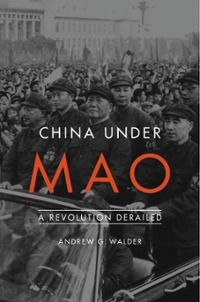5. {ths) This question is on health insurance. There are two types of customers: low- risk and high-risk. Half the population is Mam halfthe population is low-risk. Each person has wealth 400. The low-risk people get sick with probability 0.1 and the high-risk people get sick with probability 0.5. If they get sick their medical bill is 300. S__o_ without insurance they have wealth M=100 ifthey are sick, and M=400 otherwise. Their utility from wealth M is U(M) = 1/57. People know ifthey are high- risk or low-risk. a. What is the expected value of the wealth of the low-risk and high-risk people? {2th i. Low-risk: EN]: ii. High-risk: E[U]= b. How much would fair-insurance cost for each type {iftheir type was known}? {2th i. Price of fair insurance for low-risk: M = ii. Price of fair insurance for high-risk: 39\": c. What is the expected utility of the low-risk and high-risk people without insurance? {Zpt} i. Low-Risk: E[U]= ii. High-Risk: E[U]= d. Are these people risk-averse, risk-loving, or risk-neutral? {1pt} e. Which types would be willing to buy insurance at price pL? {1pt} f. Which types would be willing to buy insurance at price pH?{1pt} 6. {Spt} Consider a market for insurance in which insurance firms are perfectly competitive {i.e. charge a price for insurance equal to its expected cost}. Insurance companies cannot tell whether people are low-risk or high-risk. They sell complete insurance {i.e. they payout 300 if someone is sick}. a. If everyone was forced to buy insurance then what price, 39, would be charged by the perfectly competitive insurance companies? {lpt} b. Suppose insurance companies offered the price 39 you calculated in (a), and people are not forced to buy insurance. Note that the expected utility of someone who has purchased insurance at price p is just (JG-00 p) {because they would be completely insured against the cost of medical bills). Use this to answer the following: i. Who would buy the insurance at price 39? Why? {lpt} ii. What would the firm's profits per contract be? {1pt} c. Continuing with the case where people are not forced to buy insurance, what is the equilibrium price of insurance and who buys it? {3pt} i. Price: ii. Low-Risk Buy: Yes I No iii. High-Risk Buy: Yes I No 7. {ths} The rms now offer to provide insurance at two prices. The fair-price for low- risk and the fair price for high-risk people (p, and 3),, that you calculated in 5b). However, to get the low-risk price people have to pay $8 to get a health test and pass it. Low-risk people always pass ifthey take it, while high-risk only pass it with probability 0.05 {1/20} ifthey take it. Anyone can choose not to take the test and just buy the insurance for high-risk people {thus avoiding the 58 cost). Note, anyone who chooses to take the test will want to buy the low-risk insurance if they pass. Moreover, if a high-risk person takes andfoiis the test, they will still want to buy the high-risk insurance. However, a low-risk person will never buy insurance at the high-risk price. Calculate the expected utility for the two risk-types from taking the test vs not taking the test, who will choose to get the test and who will not? {2pt} E(U|Low risk and Test) = E(U|Low risk and NO Test) = Low-Risk Takes the Test: Yes i No E(U|High risk and Test) = E(U|High risk and N0 Test) = High-Risk Takes the Test: Yes i No What proportion of people who choose to take the test will pass the test? Why? {lpt} In expectation, will the insurance companies break-even, make a prot, or lose money on each contract sold {answering for both types of contract, given your answers to a and b). (2pt) [Note: the tests cost the companies $8 so they don't make money offthe tests directly] Low-Risk Contract: High-Risk Contract: Some researchers look at the data from all of the tests done by the insurance companies in the previous part of the question. They look at the pas s-rate of the m assume the proportion of low-risk people in the whole population is the proportion of people who passed the test (your answer to 09)). An insurance company sees this research and believes it accurately reects the proportion of low-risk people in the population. They decide to try and capture the whole market at a prot. Their plan: don't ask people to take the test and then charge what they believe is the fair price plus $7 (note this is less than the cost of the test). d. e. f. What is the fair-price given they believe that the proportion of high-risk people is the proportion of people who passed the test {your answer in {bl}? {1th Who would buy insurance at the price the insurance company plans on offering {i.e. fair-price+ $7)? {1pt} What would the expected profits he on each contract? Show your working. {1th Given the answers to {d-f}, discuss any issues with the way that the researchers evaluated the proportion of high-risk people in the population? {1th








